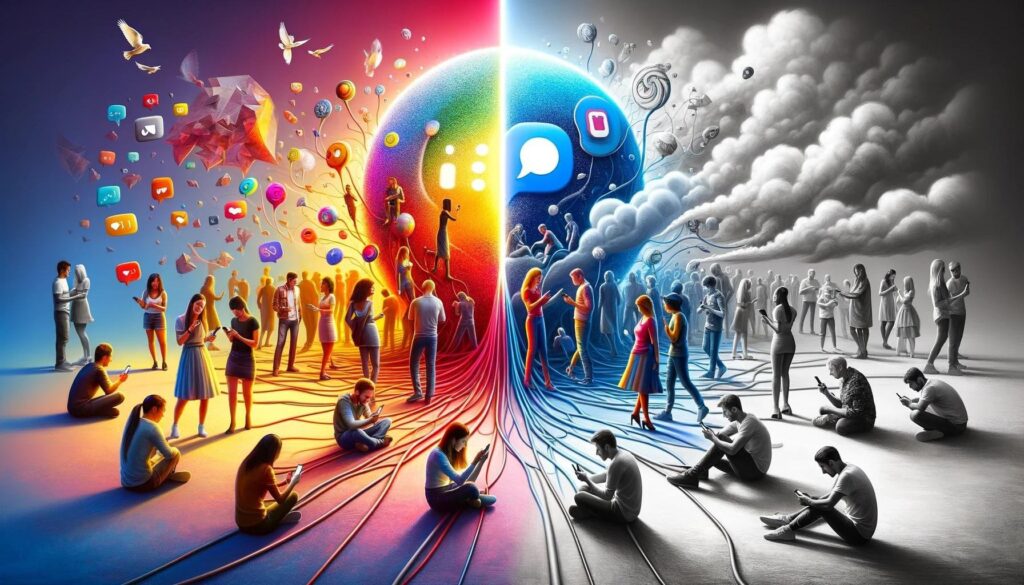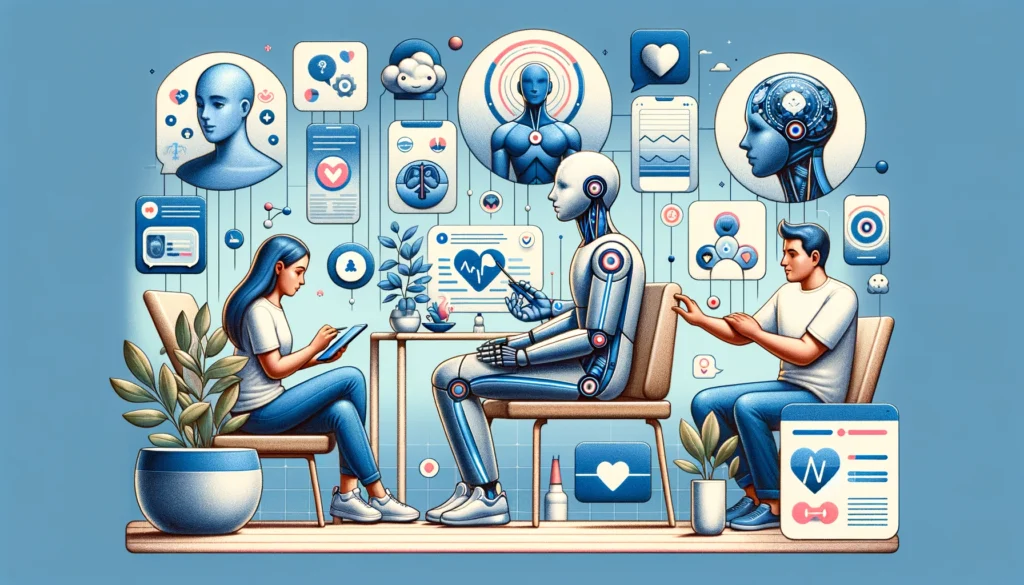In today’s digital age, technology is deeply intertwined with our daily lives, influencing various aspects of our well-being. While it offers numerous benefits, it’s essential to understand both its positive and negative effects on mental health. Here’s an exploration of how technology impacts your mental well-being.
1. Teletherapy: Therapy at Your Fingertips
Teletherapy has revolutionized access to mental health care by allowing individuals to receive therapy sessions remotely. This convenience has made mental health support more accessible, especially for those in remote areas or with mobility challenges. However, it’s crucial to ensure that teletherapy platforms maintain confidentiality and adhere to ethical standards.
2. Mental Health Apps: Tools for Everyday Wellness
Numerous apps are designed to help users manage stress, anxiety, and other mental health concerns. These apps offer features like mood tracking, guided meditations, and cognitive behavioral therapy exercises. While they can be beneficial, it’s essential to choose apps backed by scientific research and to use them as a complement to, not a replacement for, professional therapy.
3. Social Media: Connecting or Isolating?

Social media platforms enable individuals to connect with others, share experiences, and find support. However, excessive use can lead to feelings of isolation, anxiety, and depression, especially when comparing oneself to curated online personas. It’s important to use social media mindfully and set boundaries to protect mental health.
4. Video Games: Entertainment or Escape?
Video games offer immersive experiences and can be a source of entertainment and relaxation. For some, they provide an escape from daily stressors. However, excessive gaming can lead to addiction, disrupted sleep patterns, and decreased physical activity. Balancing gaming with other activities is key to maintaining mental well-being.
5. Wearable Technology: Monitoring Mental Health
Wearable devices, such as fitness trackers and smartwatches, can monitor physical health metrics like heart rate and sleep patterns, which are closely linked to mental health. Some devices also offer features like guided breathing exercises to help manage stress. While these tools can provide valuable insights, they should be used in conjunction with professional guidance.
6. Online Support Groups: Virtual Communities
Online forums and support groups provide platforms for individuals to share experiences and offer support. These communities can reduce feelings of isolation and provide a sense of belonging. However, it’s important to ensure that these platforms are moderated to prevent the spread of misinformation and to maintain a safe environment.
7. Digital Detox: Unplugging for Mental Clarity
Taking breaks from digital devices can help reduce stress and improve focus. A digital detox allows individuals to reconnect with the present moment and engage in activities that promote mental well-being, such as spending time outdoors or practicing mindfulness.
8. Artificial Intelligence: Personalized Mental Health Care

Artificial intelligence is being integrated into mental health care to provide personalized treatment plans. AI can analyze data to predict mental health trends and offer tailored interventions. While promising, it’s essential to ensure that AI systems are transparent and that individuals’ privacy is protected.
9. Online Learning: Cognitive Engagement
Online courses and educational platforms provide opportunities for cognitive engagement and skill development. Lifelong learning can boost self-esteem and provide a sense of purpose. However, it’s important to manage screen time to prevent burnout and maintain a healthy balance.
10. Virtual Reality: Immersive Therapy
Virtual reality is being used in therapeutic settings to treat conditions like PTSD and phobias. By creating controlled environments, individuals can confront and process traumatic experiences in a safe space. While effective, VR therapy should be conducted under the supervision of trained professionals.
11. Digital News Consumption: Staying Informed or Overwhelmed?
While staying informed is essential, constant exposure to digital news can lead to information overload and increased stress. It’s important to curate news sources and set limits on consumption to protect mental health.
12. Technology in the Workplace: Enhancing Productivity or Increasing Stress?
Technology in the workplace can enhance productivity through tools that streamline tasks and improve communication. However, the constant connectivity can lead to burnout and stress. It’s crucial for organizations to promote a healthy work-life balance and for individuals to set boundaries to manage stress effectively.
Final Thoughts
Technology plays a significant role in shaping our mental health. By understanding its impacts and using digital tools mindfully, individuals can harness the benefits while mitigating potential drawbacks. It’s essential to maintain a balance, ensuring that technology serves as a tool for enhancing well-being rather than a source of stress.
Tragic Loss: Architect of India’s Project Cheetah Dies in Saudi Arabia


